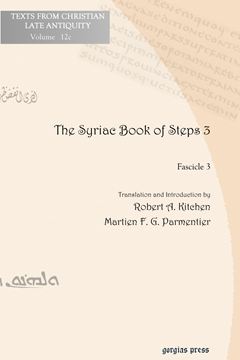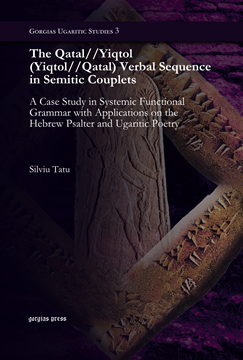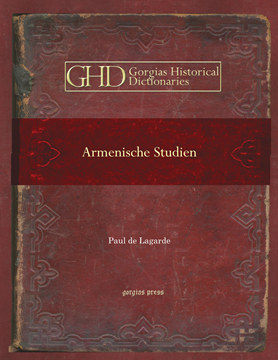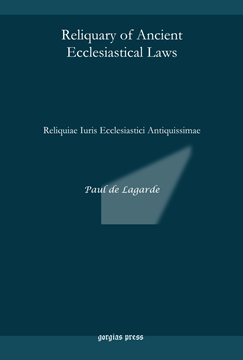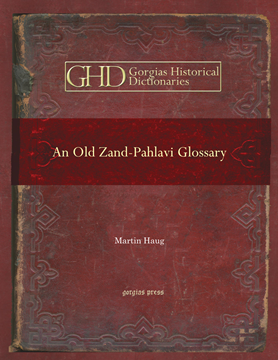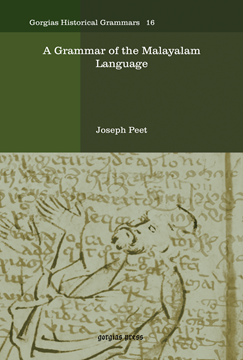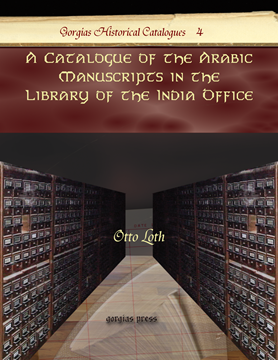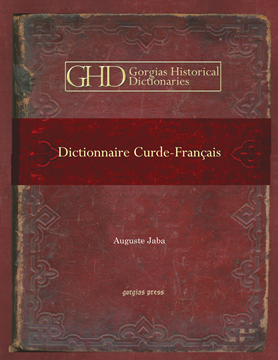The Syriac Book of Steps 3
Syriac Text and English Translation
Translation and Introduction by Robert A. Kitchen & Martien F. G. Parmentier
Series: Texts from Christian Late Antiquity 12c
ISBN: 978-1-59333-981-4
The Syriac Book of Steps collects 30 sermons by a late 4th century anonymous author in the Persian Empire. The author details the spiritual life, highlighting the duties and problems of two ranks of committed Christians, the Upright and the Perfect.
$67.00 (USD) $40.20 (USD)
The Qatal//Yiqtol (Yiqtol//Qatal) Verbal Sequence in Semitic Couplets
A Case Study in Systemic Functional Grammar with Applications on the Hebrew Psalter and Ugaritic Poetry
By Silviu Tatu
Series: Gorgias Ugaritic Studies 3
ISBN: 978-1-59333-958-6
The book investigates the qatal//yiqtol (yiqtol//qatal) verbal sequence, previously known as ‘tense shifting’, as found in couplets of the Hebrew Psalter, attempting an innovatory explanation by means of M.A.K. Halliday’s Systemic Theory. This study argues that qatal and yiqtol verbal forms, when part of the qatal//yiqtol verbal sequence in Psalms' poetic couplets, can be used primarily for aesthetic reasons, with no individual reference to time or aspect. Arguably, the Systemic Functional Grammar analysis of lexicogrammar can provide a comprehensive interpretation of form and function and an integrated approach to phonetics, morphology and syntax.
$226.00 (USD) $135.60 (USD)
Armenische Studien
Series: Kiraz Historical Dictionaries Archive 14
ISBN: 978-1-59333-986-9
Venturing into the realm of the Armenian language, Lagarde here presents a preliminary glossary of the language. The main body of the book contains over 2400 lexical entries, most of which are brief, dense descriptions of the words. Following the glossary Lagarde provides a comparative chart to the Armenian words including material from Sanskrit, Bactrian or Old Persian, Neo-Persian, Greek, and Semitic. An essay on the history of the study of the language and indices round out this early work on the Armenian tongue. This book, written in German, holds an important place in the study of Armenian.
$138.00 (USD) $82.80 (USD)
Reliquary of Ancient Ecclesiastical Laws
Reliquiae Iuris Ecclesiastici Antiquissimae
ISBN: 978-1-59333-988-3
A notable resource for both church historians and linguists, this work of Lagarde contains both Syriac and Greek materials concerning ancient ecclesiastical laws. A number of ancient documents are cited in this unusual collection. Half of this collection is presented in the original Syriac and half in the original Greek. All introductions and notes are written in Latin. Intended for the serious linguist and church historian, this work requires language skills to unravel. As a collection of materials that had been inaccessible up to Lagarde’s time, this volume also serves as a period piece containing a fresh view of writings that helped inform the growth of canon law.
$159.00 (USD) $95.40 (USD)
An Old Pahlavi-Pazand Glossary
Edited with an Alphabetical Index
By Martin Haug
Series: Kiraz Historical Dictionaries Archive 15
ISBN: 978-1-59333-995-1
Originally compiled by Destur Hoshangji Jamaspji Asa, this historic dictionary was revised and enlarged by Martin Haug. This edition of the glossary represents the first time that the Pahlavî-Pâzand, or Saanian Farhang, was published in its ancient form and arrangement. The dictionary is of an Aramaic translation into Middle Persian, in Pahlavi script. A substantial introductory essay on Pahlavi begins the work; entries are translated into English, occasionally reaching substantial essays. A truly historic attempt to document a language far removed from many European and new world scholars, Haug has produced an indispensable historic dictionary.
$191.00 (USD) $114.60 (USD)
An Old Zand-Pahlavi Glossary
Edited in the Original Characters
By Martin Haug
Series: Kiraz Historical Dictionaries Archive 16
ISBN: 978-1-59333-996-8
This historical dictionary contains an English translation of the Frahang-I Oim-evak, an antique Avestan and Middle Persian dictionary. A collaboration between Martin Haug and Destur Hoshengji Jamaspji, this rare glossary provides the Pahlavi translations for almost 900 Avestan words. Avestan is an Eastern Old Iranian language used by the Zoroastrian Avesta. It represents one of the earliest known Iranian languages. This dictionary was one of the earliest attempts to present the material to a western readership. Still considered a historic entry-point into the language, Haug’s glossary has become a rare find. Gorgias Press is pleased to bring it back into circulation as a part of our Historical Dictionary series.
$132.00 (USD) $79.20 (USD)
A Grammar of the Malayalam Language
By Joseph Peet
Series: Kiraz Historical Grammars Archive 16
ISBN: 978-1-59333-997-5
Based on years of personal experience in India, Joseph Peet’s grammar of Malayalam was the first attempt by a western scholar to document the language. Set out like a classical grammar of the period, Peet begins with an introduction to the language and the orthography. The parts of speech are each treated, followed by an account of the syntax. One of the official languages of India, Malayalam is spoken by about 37 million individuals, mostly in the state of Kerala in the southern part of the nation. For the historian interested in the history of the study of Malayalam, this grammar is a special find.
$133.00 (USD) $79.80 (USD)
The Divans of the Six Ancient Arabic Poets
Ennabiga, Antara, Tharafa, Zuhair, Alqama and Imruulqais
By W. Ahlwardt
ISBN: 978-1-59333-998-2
This collection of the Divans of Ennabiga, Antara, Tharafa, Zuhair, Alqama, and Imruulqais is a rare find. Among the earliest known writers of Arabic poetry, these authors are essential components of Arabic history and literature. This study, long out of print, is the acknowledged starting point for the study of these poets. Their Divans are presented in Arabic, along with a substantial introduction by Ahlwardt, a list of variant readings and corrections, considerations of discrepancies in the manuscripts, and appendices of the fragments.
$175.00 (USD) $105.00 (USD)
A Catalogue of the Arabic Manuscripts in the Library of the India Office
By Otto Loth
Series: Kiraz Historical Catalogues Archive 4
ISBN: 978-1-59333-925-8
Commissioned by the Indian government to prepare a descriptive catalogue of the Arabic manuscripts of the Library of India Office in London, Loth produced this reference work. A total of 1,050 manuscripts are covered in the catalogue. At the time of the composition of Loth’s work, only one of the items in the catalogue had even been the subject of an edition, indicating that the vast majority of items were unknown until the late 1870s.
$165.00 (USD) $99.00 (USD)
Dictionnaire Curde-Français
By Auguste Jaba
Series: Kiraz Historical Dictionaries Archive 17
ISBN: 978-1-59333-926-5
This historic dictionary was the first French-Kurdish dictionary ever published. Compiled by Auguste Jaba, a Polish diplomat in the Russian service in the Middle East, this lexical enterprise initiated an interest in the under-studied language of the Kurds. Entries are written in the modified Arabic script for Kurdish, and are provided with a pronunciation key and translation into French. Historians of the languages of Iraq and Kurdistan will find having this dictionary essential to the unfolding growth of knowledge about this region.
$202.00 (USD) $121.20 (USD)
